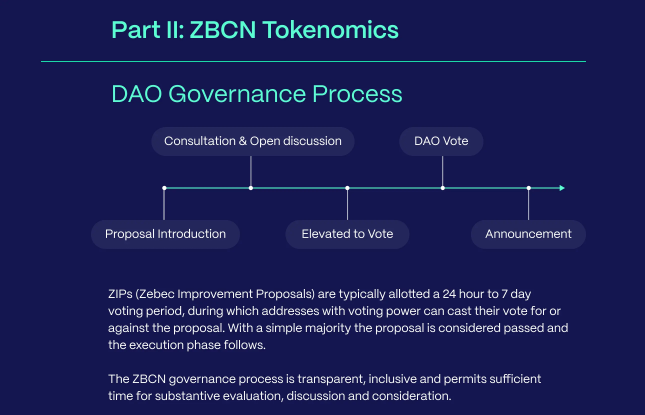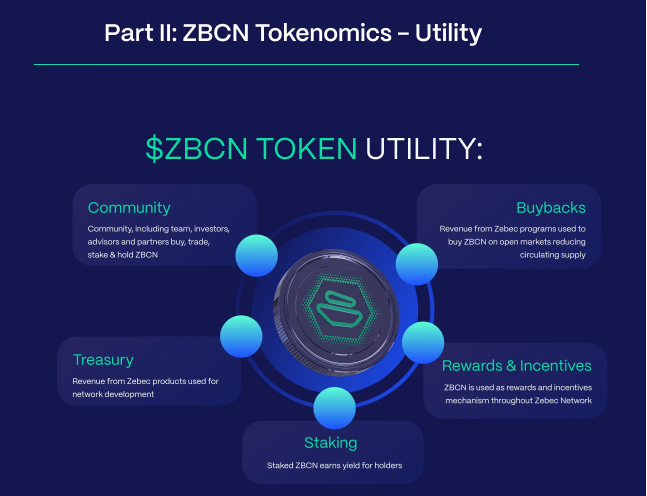In a financial industry still constrained by legacy systems, Zebec Network has presented itself as a modern approach to how money moves. Traditional payroll models, especially the types used by very large organizations, are based on batch processing, and fixed payment cycles often force workers to have to wait a bit for their salaries…the money trickles in and could take days for everyone to get paid. These delays sometimes affect freelancers, contractors, and remote teams, because they’re often on separate payroll lists that are handled as secondary. On the other side, employers have to deal with transaction frictions in the form of high transaction fees, reconciliation issues, and even compliance challenges.
Zebec Network is proposing a different model: programmable, real-time money movement. By enabling continuous payment streaming allows wages, remittances, and subscriptions to flow instantly. While this may sound like a simple acceleration of payroll, it represents a broader shift toward financial systems that operate in sync with the always-on nature of modern work.
With a blockchain-native infrastructure at its core, Zebec replaces traditional lump-sum payouts with a steady stream of earnings, providing users with immediate liquidity and greater control over their finances.
How Zebec Network Works
Zebec has leveraged blockchain technology to enable real-time, programmable payments. Originally built on the Solana network, its architecture is powered by smart contracts that automate fund transfers, allowing them to be paused, modified, or resumed transparently and without intermediaries.
At the core of its ecosystem is Zebec Pay, a blockchain-native application that combines payroll, budgeting, bill payments, and peer-to-peer transfers in one platform. It supports both cryptocurrency and fiat transactions. For companies, Zebec Pay integrates with popular payroll and HR systems, offering the ability to pay global teams in stablecoins such as USDC, potentially reducing cross-border costs and easing compliance burdens.
Complementing Zebec Pay are Zebec Cards, prepaid and debit cards backed by the Mastercard network. But is Zebec card legit? Absolutely. The Zebec Card is fully operational, globally accepted, and designed for secure and seamless usage. These cards bridge the gap between crypto and traditional commerce by allowing users to spend digital assets in fiat currency, with instant conversion and minimal fees.
What are the benefits of Zebec Card? Users enjoy real-time access to near-zero transaction fees, mobile wallet integration (like Apple Pay and Google Pay), and improved spending flexibility worldwide. The white-label program even lets partners issue branded cards—driving adoption and token utility.
Zebec’s infrastructure is designed to be chain-agnostic. While its roots lie in Solana, the protocol now operates across multiple blockchain networks to ensure broader adoption and interoperability. Through integrations with cross-chain bridges and smart contract platforms, Zebec enables frictionless transactions across ecosystems, a crucial feature for enterprises that manage large-scale digital assets and payrolls. By embracing a multi-chain strategy, Zebec positions itself as a global financial infrastructure capable of linking traditional finance, Web3 applications, and decentralized physical infrastructure networks (DePIN).
At the heart of this ecosystem is the $ZBCN token, launched in mid-2024 as an upgrade to the original $ZBC.The token underpins governance and operations within the network, enabling holders to vote on proposals via a hybrid governance model that combines on-chain voting with community input. It also serves practical purposes—funding Zebec Cards, staking for yield, and acting as collateral within DeFi platforms. A revenue-based buyback mechanism further ties token value to platform activity by periodically reducing supply.

To further align platform growth with token value, Zebec has implemented a revenue-based buyback program. A portion of its income is used to repurchase $ZBCN tokens from the open market, reducing supply and reinforcing a deflationary economic model. This is to strengthen the token’s value over time and reward long-term holders and active ecosystem participants.
RELATED: Governance Tokens vs. Utility Tokens: What’s the Difference?
Together, these innovations spanning continuous payments, enterprise payroll, consumer spending, cross-chain compatibility, and robust tokenomics position Zebec as a foundational player in the future of programmable finance. Whether for individuals seeking instant financial access or enterprises managing global operations, Zebec provides the infrastructure to move money smarter, faster, and without borders.

What Sets Zebec Network Apart?
Let’s consider some features that set Zebec Network apart:
Revolutionizing payroll systems
Zebec is overhauling the global payroll system. Instead of waiting weeks for paychecks, workers receive earnings in real-time, gaining immediate control. For employers, Zebec automates disbursement and offers programmable payments, solving inefficiencies in traditional finance..
Treasury management for DAOs and web3 teams
Managing funds in the crypto space can be chaotic, particularly for Web3 projects that raise capital in digital assets but lack structured financial tools. Zebec steps in as a comprehensive treasury management solution tailored to the unique needs of DAOs and decentralized teams. It enables automated treasury operations such as scheduled vesting for token distributions, real-time contributor payouts, and precise tracking of inflows and outflows. Built-in compliance and reporting tools help ensure regulatory alignment and financial clarity, two major pain points in crypto finance. With Zebec, Web3 teams can operate with the same level of financial sophistication as traditional firms, but with the speed and flexibility of blockchain.
Lower transaction costs and instant finality
Built on the high-performance Solana blockchain, Zebec offers exceptional speed and affordability. Payments settle in less than a second, and transaction fees are so low they cost just a fraction of a cent, making the system highly efficient for microtransactions and large-scale payroll alike.
In addition, Zebec supports atomic execution of smart contracts, meaning that payment conditions and logic are enforced automatically and without delay. Compared to traditional financial infrastructure and even other Layer 1 blockchains that struggle with congestion and high gas fees, Zebec’s infrastructure delivers unmatched performance, reliability, and scalability.
Cross-border streaming payments
Zebec is redefining how global payroll and remittances function by making cross-border payments as seamless as sending an email. Its support for stablecoins, remittance solutions, and the Zebec Card (backed by Mastercard) allows workers to receive their earnings in real time and spend them instantly, no matter where they are in the world.
This is particularly powerful for businesses with global or remote teams, as Zebec’s combination of Web2-friendly interfaces and Web3 infrastructure eliminates delays, intermediaries, and excessive foreign exchange fees. For the future of remote work and borderless hiring, Zebec provides a frictionless, crypto-native financial bridge that empowers companies and workers alike.
Limitations and Challenges
User adoption hurdles
Despite its appeal, streaming finance remains a novel concept for most. Employers and workers must shift from “payday thinking” to a continuous compensation mindset. Onboarding flows and user education will be critical.
Market competition from payment giants
Zebec competes not only with crypto-native startups but also with fintech titans like Stripe and PayPal, expanding into digital assets. Maintaining product agility and regulatory clarity will be vital.
Regulatory ambiguity in continuous payments
While crypto payroll offers flexibility, regulators have yet to define guidelines around tax withholding, labour rights, and compliance for streaming wages, especially in global contexts.
Token utility and inflation concerns
While $ZBCN offers real-world utility, maintaining long-term demand requires continuous platform growth and buyback execution. Token inflation could pose a risk if adoption plateaus.
Zebec: Powering the Pulse of Real-Time Finance
Zebec is not merely creating financial tools; it’s reengineering the very architecture of how money moves. In the world Zebec envisions, value flows as seamlessly as data: continuously, programmatically, and across borders without friction. It’s an ambitious leap from traditional financial rails toward a new paradigm, one where payments aren’t delayed, disjointed, or dictated by middlemen, but are instead streamed in real time to anyone, anywhere.
Recent developments only underscore this forward momentum. With the launch of Zebec Protocol v2, the platform has unlocked multichain payment capabilities, dramatically increasing interoperability across blockchain ecosystems. Strategic acquisitions such as PayBridge, SPS, and Science Card are embedding Zebec into existing payroll and niche fintech infrastructures, from legacy HR stacks to academic financial networks, broadening its real-world reach.
🚨 Zebec Network acquires @ScienceCardUK 🇬🇧
Reaching 50,000+ users across 10 leading UK universities — including Cambridge and Aston University — Science Card will bring real-world utility to campus spending.
With this acquisition, we’re enabling students to spend crypto on… pic.twitter.com/dg7kRjPhv1
— Zebec Network (@Zebec_HQ) May 29, 2025
Meanwhile, the expansion of Zebec’s card program marks a critical milestone. These globally available, non-custodial crypto cards now support white-label customization, opening the door to enterprise-grade partnerships and allowing ecosystem players to build their own branded financial tools. And through its integration with the Nautilus chain, Zebec is stepping into the decentralized physical infrastructure (DePIN) space—connecting smart payments to real-world systems and services, from IoT to supply chain automation.
Taken together, these moves signal more than product evolution; they mark a protocol-level bet on the future of real-time finance. If streaming defines the future of media, work, and productivity, then Zebec could well become the financial backbone of that world. It’s not just a payment solution—it’s the infrastructure for a new economic rhythm.
Disclaimer: This piece is intended solely for informational purposes and should not be considered trading or investment advice. Nothing herein should be construed as financial, legal, or tax advice. Trading or investing in cryptocurrencies carries a considerable risk of financial loss. Always conduct due diligence.
If you would like to read more articles like this, visit DeFi Planet and follow us on Twitter, LinkedIn, Facebook, Instagram, and CoinMarketCap Community.
Take control of your crypto portfolio with MARKETS PRO, DeFi Planet’s suite of analytics tools.”





















